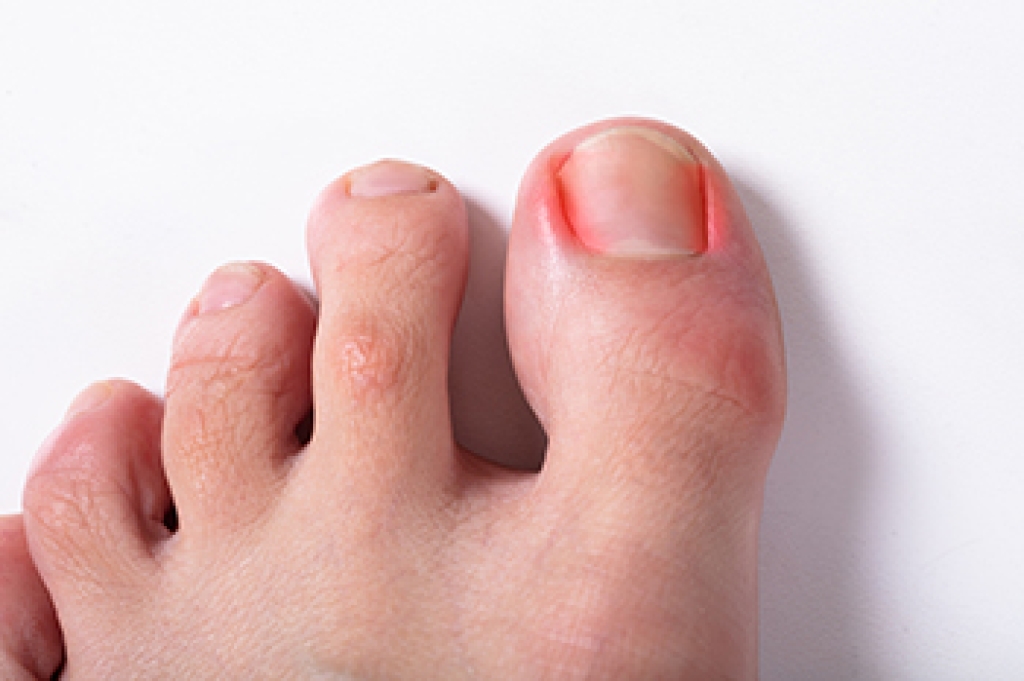
Ingrown toenails develop when the edge of the toenail presses into the surrounding skin, often causing redness, pain, and swelling. This commonly affects the big toe and may worsen if left untreated. One of the main causes of ingrown toenails is wearing shoes that squeeze the toes, which pushes the nail into the skin. Improper nail trimming, especially rounding off the corners or tearing at the edge, can increase the risk. A proper trim should leave a straight edge across the nail. If the area becomes increasingly painful, red, or begins to drain fluid, the problem may be progressing. A chiropodist can examine the affected toe, clean the area carefully, and offer non-surgical methods to ease pressure from the nail. Footwear advice and proper nail care guidance may also be given. If you have developed a painful ingrown toenail, it is suggested that you make an appointment with a chiropodist for help.
Ingrown toenails may require medical attention. If you have significant pain or notice signs of infection from an ingrown toenail, please consult with Emily Yu, B.Sc from Uptown Foot Care Clinic. Our specialist will assess your condition and provide you with quality foot and ankle treatment.
What Is an Ingrown Toenail?
An ingrown toenail occurs when the edges of a toenail grow into the surrounding skin. The toenails of the big toe are usually affected, however, an ingrown toenail can happen on any toe. Sometimes, the area can become infected leading to potentially serious complications. The ingrown toenail may be caused by improper trimming of the toenail, wearing ill-fitting shoes, or injury to the nail.
Symptoms
The symptoms of an ingrown toenail include:
- Pain
- Swelling
- Redness
- Warmth
- Pus or drainage from the affected nail or a fever may indicate an infection of the area.
Treatment
Treatment depends on the severity of the ingrown toenail. In less severe cases, home treatment may be adequate. Soaking the affected foot in warm water and gently lifting the nail from the skin with a piece of clean cotton can help. In more severe cases, you may need to use topical or oral antibiotics to treat an infection. Surgical removal of the ingrown toenail may be required if more conservative treatments fail.
Ingrown toenails may be prevented by wearing well-fitted shoes and properly trimming the toenails. Toenails should be trimmed straight across and not too short when using nail clippers.
If you have any questions please feel free to contact our office located in Toronto, ON .
